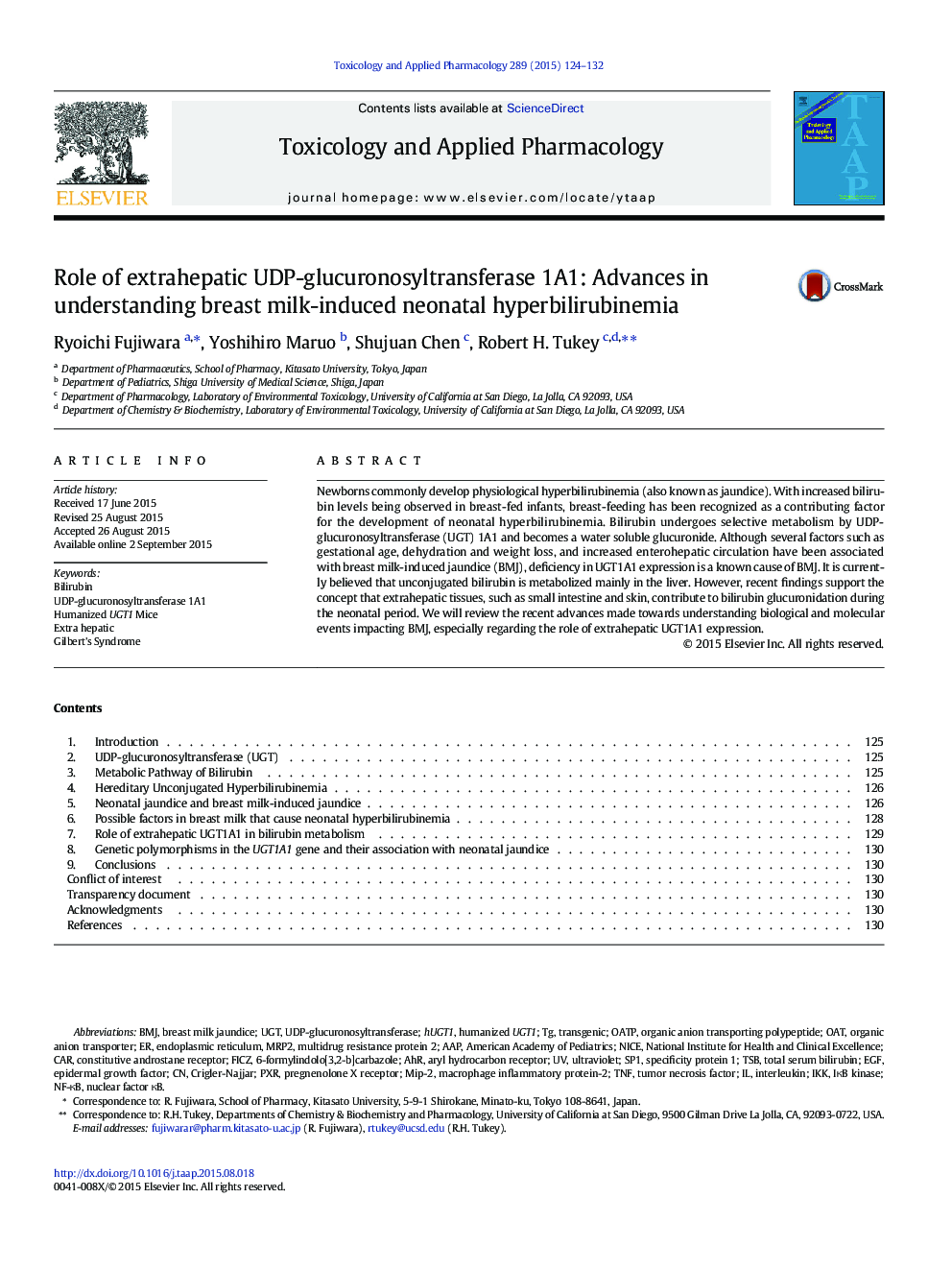| Article ID | Journal | Published Year | Pages | File Type |
|---|---|---|---|---|
| 2568345 | Toxicology and Applied Pharmacology | 2015 | 9 Pages |
•Breast-feeding can be a factor for the development of neonatal hyperbilirubinemia.•UDP-glucuronosyltransferase (UGT) 1A1 is the sole bilirubin-metabolizing enzyme.•Extrahepatic UGT1A1 plays an important role in bilirubin metabolism.•We discuss the potential mechanism of breast milk-induced neonatal jaundice.
Newborns commonly develop physiological hyperbilirubinemia (also known as jaundice). With increased bilirubin levels being observed in breast-fed infants, breast-feeding has been recognized as a contributing factor for the development of neonatal hyperbilirubinemia. Bilirubin undergoes selective metabolism by UDP-glucuronosyltransferase (UGT) 1A1 and becomes a water soluble glucuronide. Although several factors such as gestational age, dehydration and weight loss, and increased enterohepatic circulation have been associated with breast milk-induced jaundice (BMJ), deficiency in UGT1A1 expression is a known cause of BMJ. It is currently believed that unconjugated bilirubin is metabolized mainly in the liver. However, recent findings support the concept that extrahepatic tissues, such as small intestine and skin, contribute to bilirubin glucuronidation during the neonatal period. We will review the recent advances made towards understanding biological and molecular events impacting BMJ, especially regarding the role of extrahepatic UGT1A1 expression.
